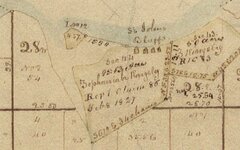signumops
Hero Member
- Feb 28, 2007
- 756
- 230
- Detector(s) used
- Garrett, Minelab, Aqua-Pulse
- Primary Interest:
- All Treasure Hunting
I have access to this book written in Dutch around 1705 by Pieter Vander Aa dealing with the Huguenots (spelling?), particularly Laudoniere, Ribault, and a two other military folk of the period from 1564 - 1567. It was printed for Karl IX, and seeing how the Dutch and Flemish supported churches other than the Catholic church, I can only imagine what the tilt was toward the Spanish within the body of the text. Might be something we English speakers have not heard before.
At any rate, I am looking for somebody who can translate the text to English and I have excerpted a section of two galleys from one of the pages as a typical representation of the manuscript. It is old, of course, but still pretty legible. At the moment I am trying to do this on spec, hope to get some grant money to print and sell a finished translation, set side by side with the original images. Also will be a mongraph dealing with issues discussed by Vander Aa. This is definitely a publication Florida treasure hunters would find interesting (I think... don't know for sure till its translated, damn the bad luck!).
If you're interested, or know somebody who is, PM me. Or don't.
At any rate, I am looking for somebody who can translate the text to English and I have excerpted a section of two galleys from one of the pages as a typical representation of the manuscript. It is old, of course, but still pretty legible. At the moment I am trying to do this on spec, hope to get some grant money to print and sell a finished translation, set side by side with the original images. Also will be a mongraph dealing with issues discussed by Vander Aa. This is definitely a publication Florida treasure hunters would find interesting (I think... don't know for sure till its translated, damn the bad luck!).
If you're interested, or know somebody who is, PM me. Or don't.













